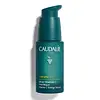What's inside
What's inside
 Key Ingredients
Key Ingredients

 Benefits
Benefits

 Concerns
Concerns

 Ingredients Side-by-side
Ingredients Side-by-side

Water
Skin ConditioningSqualane
EmollientButylene Glycol
HumectantPalmitoyl Grape Seed Extract
Skin ConditioningGlycerin
HumectantC14-22 Alcohols
Emulsion StabilisingAscorbyl Tetraisopalmitate
AntioxidantEthylhexylglycerin
Skin ConditioningPolyacrylate Crosspolymer-6
Emulsion StabilisingGlyceryl Stearate Se
EmulsifyingPhenylpropanol
MaskingC12-20 Alkyl Glucoside
EmulsifyingHydrolyzed Hyaluronic Acid
HumectantPropanediol
SolventTocopherol
AntioxidantCaprylyl Glycol
EmollientHelianthus Annuus Seed Oil
EmollientAcacia Senegal Gum
MaskingXanthan Gum
EmulsifyingPicea Abies Wood Extract
Sodium Phytate
Citric Acid
BufferingWater, Squalane, Butylene Glycol, Palmitoyl Grape Seed Extract, Glycerin, C14-22 Alcohols, Ascorbyl Tetraisopalmitate, Ethylhexylglycerin, Polyacrylate Crosspolymer-6, Glyceryl Stearate Se, Phenylpropanol, C12-20 Alkyl Glucoside, Hydrolyzed Hyaluronic Acid, Propanediol, Tocopherol, Caprylyl Glycol, Helianthus Annuus Seed Oil, Acacia Senegal Gum, Xanthan Gum, Picea Abies Wood Extract, Sodium Phytate, Citric Acid
Maris Aqua
HumectantAscorbyl Methylsilanol Pectinate
AntioxidantEthylhexyl Cocoate
EmollientGlycerin
HumectantMethylpropanediol
SolventC15-19 Alkane
SolventCaprylic/Capric Triglyceride
MaskingPanthenol
Skin ConditioningPentylene Glycol
Skin ConditioningSodium Acrylate/Sodium Acryloyldimethyl Taurate Copolymer
Emulsion StabilisingGlyceryl Stearate
EmollientPEG-100 Stearate
Tocopheryl Acetate
AntioxidantRetinyl Palmitate
Skin ConditioningLactic Acid
BufferingTocopherol
AntioxidantMorus Alba Root Extract
BleachingVitis Vinifera Seed Extract
AntimicrobialIsohexadecane
EmollientButylene Glycol
HumectantPolysorbate 80
EmulsifyingSclerotium Gum
Emulsion StabilisingCitronellyl Methylcrotonate
MaskingAlcohol
AntimicrobialSorbitan Oleate
EmulsifyingCitric Acid
BufferingPEG-40 Hydrogenated Castor Oil
EmulsifyingTetrasodium Glutamate Diacetate
Chlorphenesin
AntimicrobialO-Cymen-5-Ol
AntimicrobialParfum
MaskingMaris Aqua, Ascorbyl Methylsilanol Pectinate, Ethylhexyl Cocoate, Glycerin, Methylpropanediol, C15-19 Alkane, Caprylic/Capric Triglyceride, Panthenol, Pentylene Glycol, Sodium Acrylate/Sodium Acryloyldimethyl Taurate Copolymer, Glyceryl Stearate, PEG-100 Stearate, Tocopheryl Acetate, Retinyl Palmitate, Lactic Acid, Tocopherol, Morus Alba Root Extract, Vitis Vinifera Seed Extract, Isohexadecane, Butylene Glycol, Polysorbate 80, Sclerotium Gum, Citronellyl Methylcrotonate, Alcohol, Sorbitan Oleate, Citric Acid, PEG-40 Hydrogenated Castor Oil, Tetrasodium Glutamate Diacetate, Chlorphenesin, O-Cymen-5-Ol, Parfum
 Reviews
Reviews

Ingredients Explained
These ingredients are found in both products.
Ingredients higher up in an ingredient list are typically present in a larger amount.
Butylene Glycol (or BG) is used within cosmetic products for a few different reasons:
Overall, Butylene Glycol is a safe and well-rounded ingredient that works well with other ingredients.
Though this ingredient works well with most skin types, some people with sensitive skin may experience a reaction such as allergic rashes, closed comedones, or itchiness.
Learn more about Butylene GlycolCitric Acid is an alpha hydroxy acid (AHA) naturally found in citrus fruits like oranges, lemons, and limes.
Like other AHAs, citric acid can exfoliate skin by breaking down the bonds that hold dead skin cells together. This helps reveal smoother and brighter skin underneath.
However, this exfoliating effect only happens at high concentrations (20%) which can be hard to find in cosmetic products.
Due to this, citric acid is usually included in small amounts as a pH adjuster. This helps keep products slightly more acidic and compatible with skin's natural pH.
In skincare formulas, citric acid can:
While it can provide some skin benefits, research shows lactic acid and glycolic acid are generally more effective and less irritating exfoliants.
Most citric acid used in skincare today is made by fermenting sugars (usually from molasses). This synthetic version is identical to the natural citrus form but easier to stabilize and use in formulations.
Read more about some other popular AHA's here:
Learn more about Citric AcidGlycerin is already naturally found in your skin. It helps moisturize and protect your skin.
A study from 2016 found glycerin to be more effective as a humectant than AHAs and hyaluronic acid.
As a humectant, it helps the skin stay hydrated by pulling moisture to your skin. The low molecular weight of glycerin allows it to pull moisture into the deeper layers of your skin.
Hydrated skin improves your skin barrier; Your skin barrier helps protect against irritants and bacteria.
Glycerin has also been found to have antimicrobial and antiviral properties. Due to these properties, glycerin is often used in wound and burn treatments.
In cosmetics, glycerin is usually derived from plants such as soybean or palm. However, it can also be sourced from animals, such as tallow or animal fat.
This ingredient is organic, colorless, odorless, and non-toxic.
Glycerin is the name for this ingredient in American English. British English uses Glycerol/Glycerine.
Learn more about GlycerinTocopherol (also known as Vitamin E) is a common antioxidant used to help protect the skin from free-radicals and strengthen the skin barrier. It's also fat soluble - this means our skin is great at absorbing it.
Vitamin E also helps keep your natural skin lipids healthy. Your lipid skin barrier naturally consists of lipids, ceramides, and fatty acids. Vitamin E offers extra protection for your skin’s lipid barrier, keeping your skin healthy and nourished.
Another benefit is a bit of UV protection. Vitamin E helps reduce the damage caused by UVB rays. (It should not replace your sunscreen). Combining it with Vitamin C can decrease sunburned cells and hyperpigmentation after UV exposure.
You might have noticed Vitamin E + C often paired together. This is because it is great at stabilizing Vitamin C. Using the two together helps increase the effectiveness of both ingredients.
There are often claims that Vitamin E can reduce/prevent scarring, but these claims haven't been confirmed by scientific research.
Learn more about Tocopherol